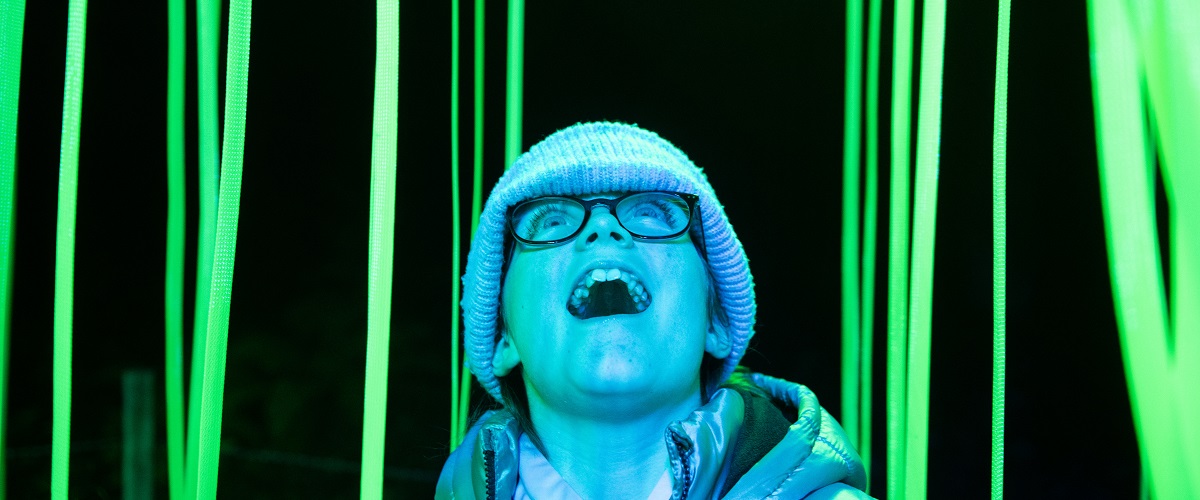About our forest.
The history of Faskally Wood.
Faskally Wood was created in the 19th century by Archibald Butter. The vegetation in the early part of the 20th century consisted of European beech, Douglas fir, European larch, Norway spruce, and Scots pine. The entire estate was acquired by the then Forestry Commission, now Forestry and Land Scotland, and Faskally House was used as a forestry training centre until the late 1960s. Young foresters were trained to repair woodlands ravaged by felling for the war effort, and Faskally Wood was perfect for testing new ideas, including mixtures of different types of trees and creation of diverse woodland structures.
Our tree species.
Faskally Wood is part of the Tay Forest Park, and currently has 23 species of trees such as Douglas fir, silver firs, wild cherry, and oak. Some trees are more than 200 years old. Within Faskally Wood and close to the car park and picnic site, lies the wonderfully tranquil Loch Dunmore, with its boat house and picturesque timber footbridge.
The Enchanted Forest was set up by Forestry and Land Scotland in 2002 as part of a push to encourage more people to use woodlands as a place for recreation and to raise the profile of Perthshire. In 2010, the management of the event was passed to a community led organisation which now operates as The Enchanted Forest Community Trust.
About the event.
The Enchanted Forest is one of Scotland’s biggest and most popular Autumn outdoor events. Faskally Wood used to welcome around 80,000 visitors annually. Thanks to the event’s popularity and success, over 160,000 people now visit every year, encouraging more and more people to embrace Scotland’s magnificent woodlands. As the show goes from strength to strength, supporting the ecology in Faskally Wood is vitally important to the continued success of The Enchanted Forest. We have always been keen to ensure that the event has minimal impact on the beautiful environment in which we operate, and the wildlife who call Faskally Wood their home.
Looking after the forest.
Every year we ask Tay Ecology to conduct a Preliminary Ecological Survey, Habitat, Protected Species And Ecological Impact Assessment Report so that our team can take all possible measures to minimise impact on the forest environment and the wildlife in the forest.
The Enchanted Forest also works in close partnership with Forestry and Land Scotland, to enhance the natural features of the forest. When recent conservation work changed the landscape around Loch Dunmore, the creative team were quick to react to the new opportunity this presented.
The removal of non-native rhododendron plants to encourage biodiversity, opened up more of the loch and inspired the name of the 2017 show Oir An Uisge – ‘edge of the water’
Rhododendron ponticum forms dense thickets and shades out native plants. If left uncontrolled, it will eventually dominate the habitat to the virtual exclusion of all other plant life.
Forestry and Land Scotland plan to replace to replace the rhododendron – which it classes as Scotland’s most invasive non-native plant – with more typical riparian vegetation, such as hazel, willow, alder and aspen.
Our forests are at risk from tree pests and diseases which can hitch a ride in mud and debris on your shoes. Please clean your shoes before visiting Faskally Wood and help slow the spread of disease. Find out more here
Protecting wildlife.
Faskally Wood is home to a diverse range of wildlife. There are kingfishers and herons, and goldeneye ducks that nest in the trees. Our most recent Environmental Impact Study, conducted in July 2023, found that the wildlife in the forest shows no signs of being affected by the activities surrounding the event.
In 2017 The Enchanted Forest donated £500 to Tayside Bat Group to install around 30 bat boxes in Faskally Wood. The forest already provides suitable habitat for a range of bat species but these boxes increase available roosting sites for them. Volunteers placed the new nesting boxes in a strip of trees along the edge of the Loch Dunmore.


